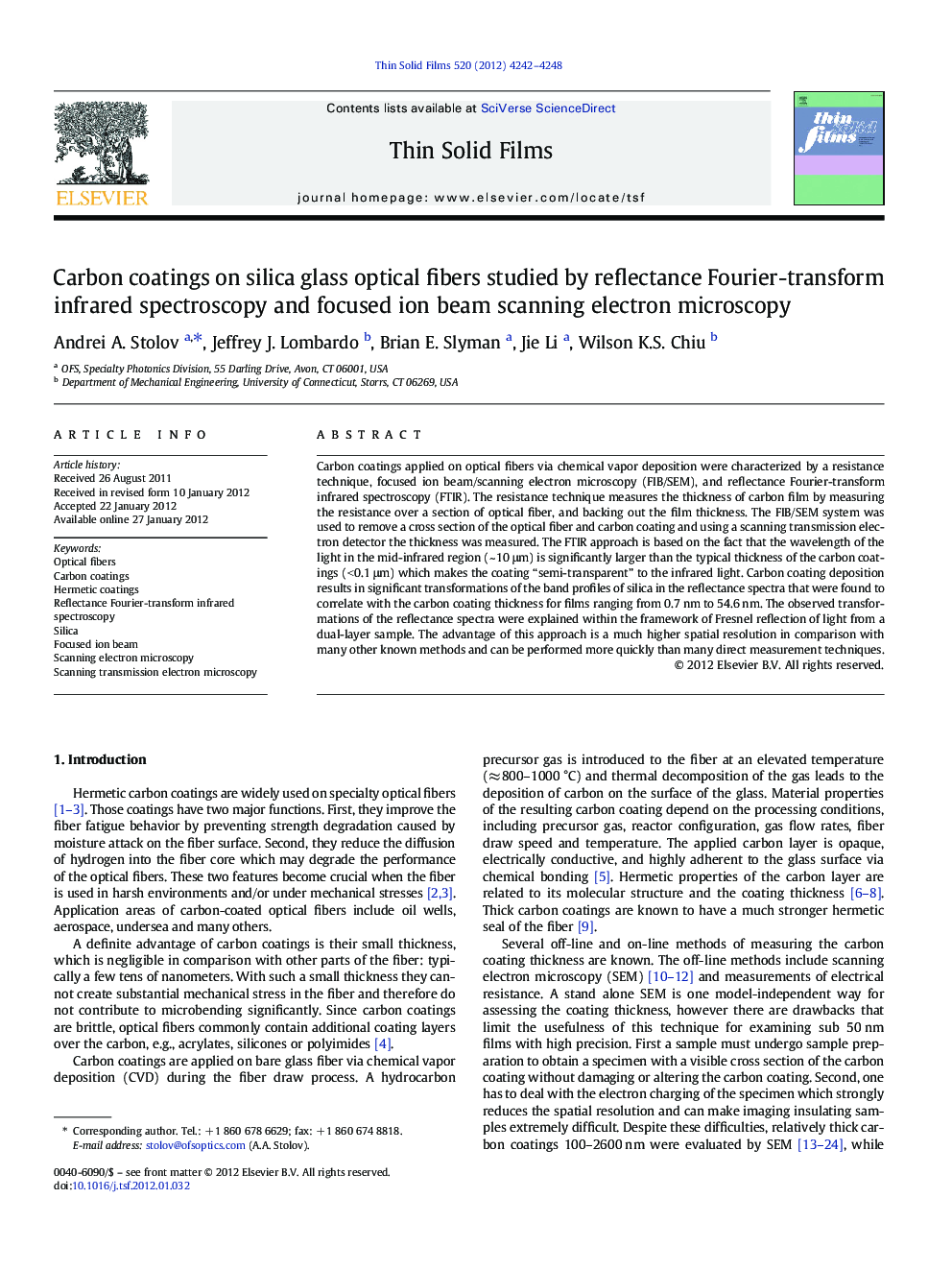| Article ID | Journal | Published Year | Pages | File Type |
|---|---|---|---|---|
| 1667455 | Thin Solid Films | 2012 | 7 Pages |
Carbon coatings applied on optical fibers via chemical vapor deposition were characterized by a resistance technique, focused ion beam/scanning electron microscopy (FIB/SEM), and reflectance Fourier-transform infrared spectroscopy (FTIR). The resistance technique measures the thickness of carbon film by measuring the resistance over a section of optical fiber, and backing out the film thickness. The FIB/SEM system was used to remove a cross section of the optical fiber and carbon coating and using a scanning transmission electron detector the thickness was measured. The FTIR approach is based on the fact that the wavelength of the light in the mid-infrared region (~ 10 μm) is significantly larger than the typical thickness of the carbon coatings (< 0.1 μm) which makes the coating “semi-transparent” to the infrared light. Carbon coating deposition results in significant transformations of the band profiles of silica in the reflectance spectra that were found to correlate with the carbon coating thickness for films ranging from 0.7 nm to 54.6 nm. The observed transformations of the reflectance spectra were explained within the framework of Fresnel reflection of light from a dual-layer sample. The advantage of this approach is a much higher spatial resolution in comparison with many other known methods and can be performed more quickly than many direct measurement techniques.
► Hermetic carbon films were grown on optical fibers using chemical vapor deposition. ► Focused ion beam/scanning electron microscopy provided direct thickness values. ► Transformations in reflectance infrared spectra correlate with carbon thickness. ► Spectral transformations were modeled within the framework of Fresnel equations.
